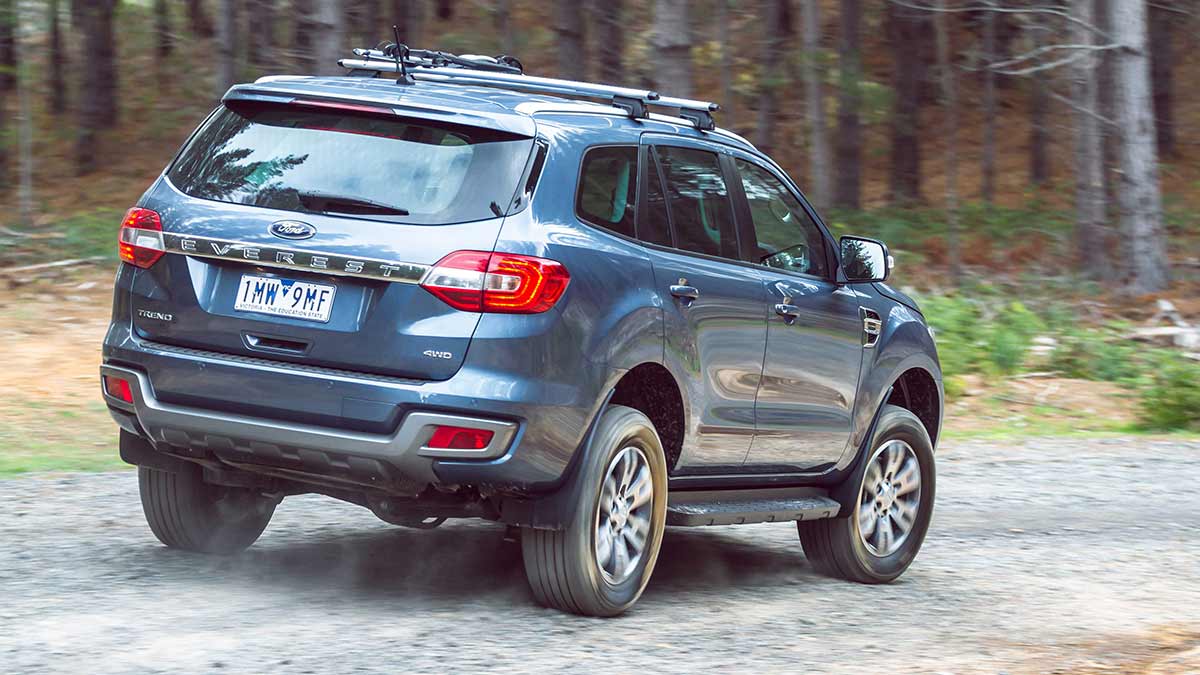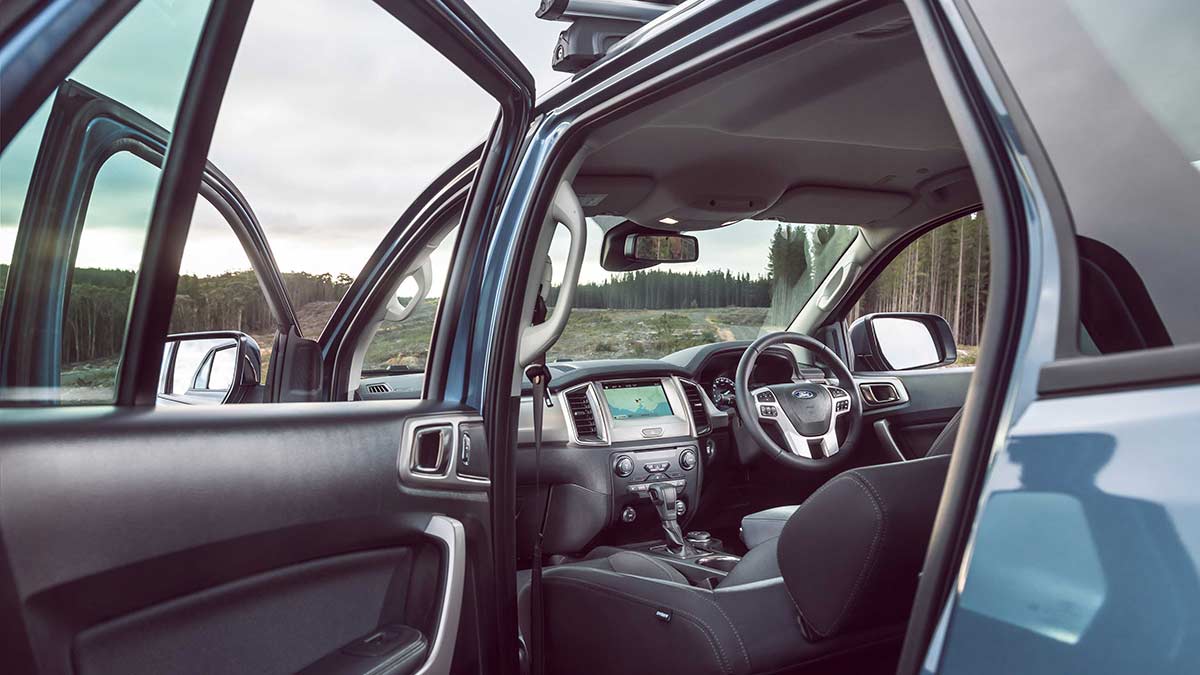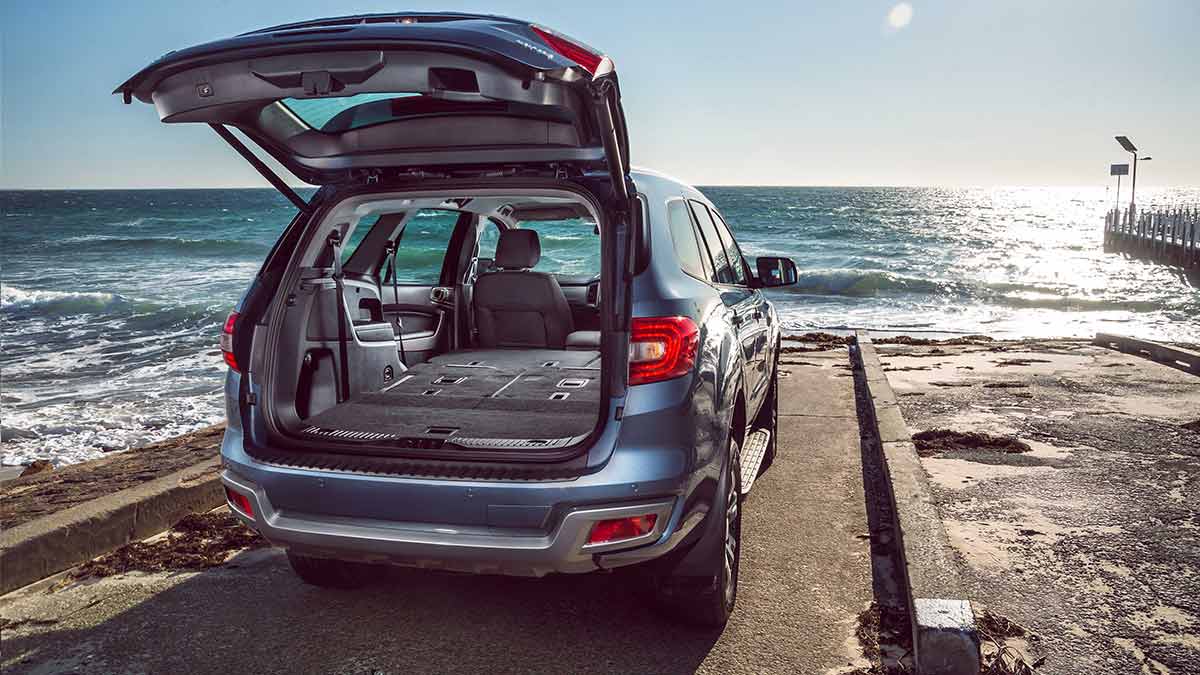The Foton Tunland joins Australia's dual-cab ute market as an affordable mild-hybrid diesel under $50,000, offering strong capability against tough competition.
Ford Everest Trend 2019 bi-turbo review

Ford’s large SUV, the Everest, gets a 2019 engine update.
Ford Everest is showing that smaller can be better by adding a 2.0-litre bi-turbo diesel engine to the range for this increasingly popular large SUV. This smaller but more powerful engine also comes with a new 10-speed automatic transmission as part of an otherwise minor facelift for Everest.
Although this four-cylinder engine is much smaller in capacity than the standard 3.2-litre five-cylinder engine, maximum power increases 14kW to 157kW, while a hefty 500Nm of torque – up 40Nm on the 3.2-litre engine – arrives at 1750-2000rpm. The delivery is noticeably smoother and quieter, giving the 2.0-litre Everest a strong, flowing, easy-to-drive manner for a vehicle of this size and type.
Thumbs up
The 2.0 litre engine delivers more power and torque than the 3.2 but with better fuel economy.
Thumbs down
There are hints of its ute origins, including a large turning circle, initial firmness in the suspension occasional abrupt gearshifts.
In this article

Five seats or seven
The new engine/transmission package is standard on the top-spec Titanium (4WD only) and rear-wheel drive mid-spec Trend models, and as an option to the 3.2-litre six-speed auto on the 4WD Trend. The entry-level Ambiente retains the 3.2-litre package but it also has five-seater options over the standard seven seats found on all other Everests.
The 2.0-litre diesel uses less fuel than the 3.2-litre model, with an official consumption of 6.9L/100km for the rear-wheel-drive model and 7.1L/100km in the four-wheel-drive. On test our 4WD 2.0-litre Trend averaged 8.5L/100km, which was significantly less than the last 3.2 Everest we drove. Note that Everest engines require add-blue, a urea fuel additive that reduces exhaust emissions, to meet emission requirements (unlike its Ranger ute cousin, which is classified as a commercial vehicle).
Once up and rolling, the 10-speed auto does its job efficiently; the shifts are generally inconspicuous. With an extra four ratios it always seems to be in the right gear to make effective use of the engine’s strong low- to mid-range torque. At low speeds, however, particularly in stop/start traffic, we experienced an occasional abrupt shift.
Ute origins exposed
Everest is based on Ford’s Ranger ute but was launched with a refined chassis and suspension set-up to produce ride, handling and steering that are more civilised for a family-friendly large SUV. Minor tweaking has further improved the dynamics. It’s a comfortable highway cruiser and does a good job around town. At low speeds, however, there is no disguising its bulk and ute origins, such as its large turning circle. Some thumping on small bumps highlights the initial firmness required to provide a controlled ride over the variety of on and off-road conditions this type of vehicle would encounter.
With the bi-turbo engine, Everest’s towing capacity increases to 3100 kilograms. The top three gears are overdrive ratios (greater than 1:1) which is not always ideal when hauling close to maximum load, but Ford says there is no need to avoid any gears when towing; the 10-speed will decide the right gear for the situation. However, it’s possible to override the transmission through Progressive Range Select (PRS) which allows progressive lock-out of the high gears or for as many gears as the driver wants. In PRS mode, the transmission continues to shift automatically but only up to the maximum gear selected.
More standard features
Apart from the mechanical changes, this update is relatively minor. Some features previously found only on the high-grade models are now standard across the range, such as keyless entry and push-button start, Ford’s SYNC 3 infotainment system with sat-nav, Apple CarPlay and Android Auto compatibility, and digital radio.
From its looks and feel, Everest means business. It’s a bit of a climb into it but the appeal of its spacious, practical cabin and the commanding view from a high, upright seating position is unquestionable. Instrumentation, controls and switches are all logically placed and clearly marked.
Prices start from $49,190 plus on-road costs through to $73,990. The all-wheel-drive 2.0-litre bi-turbo we drove is $61,190 plus on-road costs. And like all other Fords, Everest is now covered by a five-year/unlimited-kilometre warranty.
|
Price |
As tested: $61,190 plus $5503 estimated on-road costs Price range: $49,190 to $73,990 |
|---|---|
|
Drivetrain |
1996cc 4-cylinder bi-turbo diesel, 10-speed auto, 4WD. Power: 157kW@3750rpm Torque: 500Nm@1750-2000rpm Wheels: Alloy, 265/60 R18 tyres and a full-size alloy spare |
|
Fuel |
Diesel, 80-litre tank. 8.5L/100 kilometres (RACV test), 7.1L/100 kilometres (government test) |
|
Standard safety |
Five-star ANCAP, seven airbags, pre-collision assist with autonomous emergency braking, adaptive cruise control, lane-keeping system, lane departure warning, rear camera plus front and rear sensors. |
|
Standard features |
Navigation, SYNC-3 infotainment with voice control, Apple CarPlay and Android Auto, traffic sign recognition, auto headlights and wipers, leather accented seats, powered rear tailgate, keyless entry and start. |
|
Warranty/services |
60 months/unlimited kilometres, 12 months/15,000 kilometres services |





